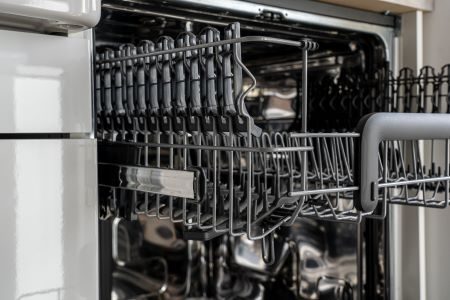With the pandemic and climate crisis impacting on global safety, it is time to ask how white goods are adapting to become more hygienic, sustainable and in turn safer.
As society has begun to continually develop, the reliance on technology has become stronger than ever. The home is a space where the reliance on technology is probably at its strongest as homeowners have depended on white goods for decades to help sustain the functionality of the home. White goods are a necessity in the home as appliances such as fridges and washing machines are needed to aid in certain choirs and keeping items secured. On top of this, major social and political issues such as the pandemic and the climate crisis have meant that homeowners are searching for more products that protect their health and the environment meaning that white good producers are having to adapt their products. So, the questions that will be assessed in this Showhome exclusive feature are how white goods are becoming smarter, environmentally friendly, and more hygienic.
What are white goods
Before we start, it is important to understand what white goods are and what products fall under this category. White goods can be defined as a larger electrical goods used domestically. These products tend to be washing machines and refrigerators and they have gained the name “white goods” because these products typically tend to be white. They can also be known as home or major domestic appliances that assist in a household function. For example, these products assist in cooking, cleaning, and preservation. Other white goods products include: a dishwasher, dryer, hot water heater, stove, and a trash compactor.
Background of white goods production
Before the technological innovations around white goods occurred – many of the labourious job were handed down to others to deal with. In the past, if a homeowner was rich, it usually fell to domestic servants to clean, manage food preservation and cooking. If an individual, however, did not have the money to afford these servants, it was down to the homeowners to handle these chores. Of course, there were industrial machines available that aided in cooking and cleaning, but a large part of these machines still required considerable amounts of manual labour. Unfortunately, these tasks usually fell to women in the household, adding a severe amount of pressure to a woman’s already busy schedule. It was noted that women would spend entire days cleaning and cooking in their house because there was a lack of support and technology available to support them.
However, things began to change in the mid-20th century when washing machines were slowly entering the consumer market. However, these items were far too expensive and usually cost many times over the average weekly salary. Therefore, this was a product that was only accessible to the rich. The end of the 1970’s, saw the prices of appliances decrease, meaning that more people had more access to these products – but even then, owning these products was still quite rare. It was the 1980’s when the products became even more popular. This was because there were major changes in the industry such as better mass manufacturing techniques, roboticised plants being built and an increase in production levels. Other items such as dishwashers became more commonplace. This gave many individuals, particularly women greater freedom as these products helped to reduce the time-consuming nature of cleaning as these items were more efficient meaning that the chores were done at a much quicker rate. This provided women with more time to themselves to pursue other interests. It was also vital regarding hygiene as these products made sure food lasted longer and maintained its healthiness.
Read more of the latest developments in our new edition: January – February 2022 Issue Form – Show Home Magazine (yourshow-home.com)
Media contact
Roshini Bains,
Editor, Showhome Magazine
Tel: +44 (0) 1622 823 922
Email: editor@yourshow-home.com






